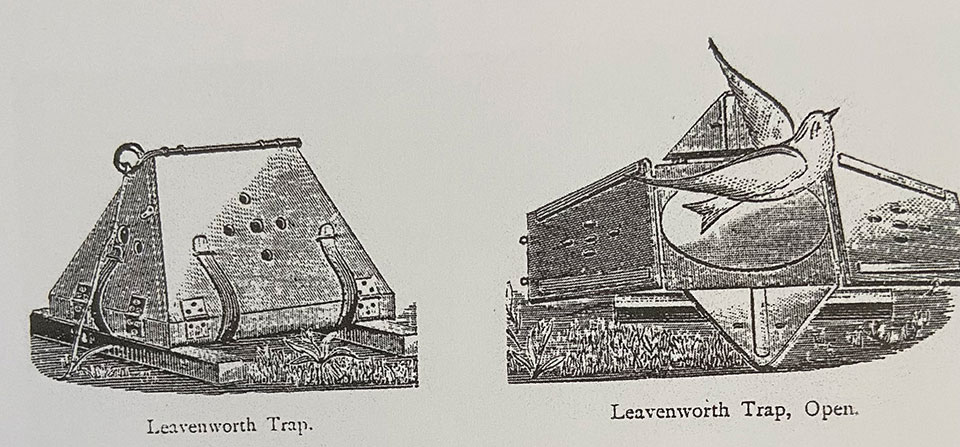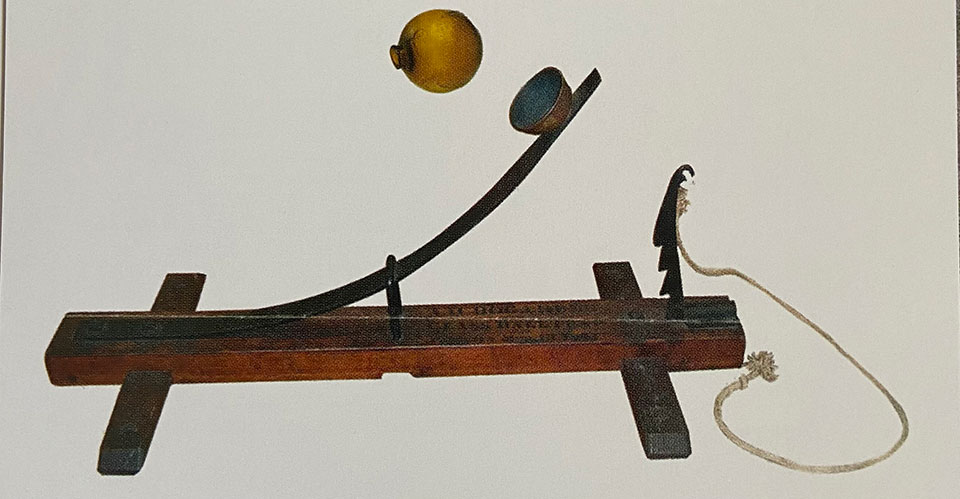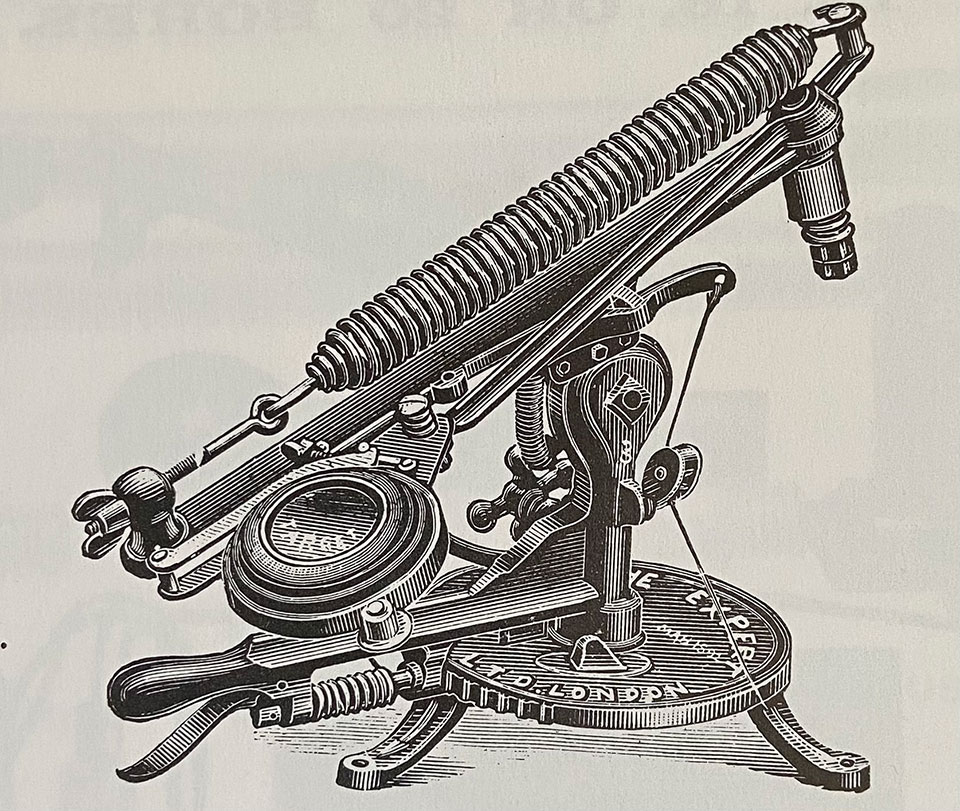Clay traps today are super-powerful, complex, remotely controlled and capable of throwing clays on many different flight patters to simulate a variety of birds.
Their journey has been long and storied, from the earliest days of competitive shooting at captive birds placed under old top hats, to modern Olympic disciplines, requiring faultless repetition. The invention and ingenuity of each age has always shaped the machinery.
Beginnings.
In the beginning there was live-pigeon trap shooting. Competitive as human beings are; boasts of who was the best shot demanded proof and the field was too random. It required a scenario in which multiple, repeated flying objects (captured birds) could be shot and a venue (usually behind a pub) in which spectators could observe, and bet on the outcome.

Given that the original clays were live birds, the original traps were containers from which the bird could be released. There was no need to throw it, as once airborne it provided flight by its own means.
The first traps were old top hats. The bird would be placed under the top hat, in a small scrape in the ground. A string was attached to the top hat and on the command ‘pull’, the trapper pulled the string and the hat rolled over, releasing the bird. The first pigeon shooting club was unsurprisingly called ‘The Old Hats’; founded in 1877 and meeting around North London.
Traps became gradually more sophisticated. By 1793 they had morphed into a shallow box with a sliding lid. Now “pull” instructed the trapper to pull his string and the lid would slide off the box, freeing the bird, which by this time was a blue-rock pigeon in genteel circles, while the riff-raff still shot at starlings and sparrows (which were cheaper).
Pubs gave way to organised gun clubs, with manicured lawns, detailed rules and lots of spectators. As the ante went up, so the machinery got better.
Metal traps were developed which, when the cord was pulled, opened a split lid and raised the floor a few inches, launching any reluctant bird immediately into the air to meet its fate.
Inanimate Targets
By 1921, live pigeon trap shooting was finished, at least in Britain. Public sensibilities had changed and the slaughter for sport (and wagering) of untold thousands of captive birds was no longer deemed morally acceptable.
With the demise of live pigeon shooting, clay target shooting became its natural successor, though it had been in existence for decades. At first it was set up to mimic live pigeon trap shooting with a set of traps in front of the shooter, rising at an agreed distance.

The first inanimate targets were balls. Hollow glass balls, often filled with feathers, to be precise. These first emerged in Boston, USA in 1866 and made their way to Britain by 1875, when there was a facility throwing them from ‘a catapult, formed of two pieces of India rubber having a cup in the centre’. This was the birth of ‘ball-trap’.
The best known glass ball trap was patented in 1877 by an American; Capt. Bogardus, the famous showman and competitive pigeon shooter. Glass balls were rivalled by balls made from pitch, which was less messy and dangerous.
The Bogardus Trap was a leaf spring on a board, with a crude iron rod standing upright with three notches, which caught the tip and held it under tension. A string was attached to the top, to act asa trigger. A cup on the spring held the ball and when the string was pulled, it released the spring, flinging the ball skyward. This spawned many imitators and improvers on the ball-trap theme, like the Morris, the Payne and the Huber
The development of the trap went hand-in-hand with the development of the target. Most sources credit the invention of the clay pigeon to American George Ligowsky of Ohio. It was a domed saucer made from actual clay, with a tab attached to facilitate throwing. Being terracotta, it was much harder to break than modern clays.
Clay shooting is first mentioned in Britain in 1882, in a report in The Field and in 1883 there was a demonstration of ‘Terracotta Pigeon Shooting’ at London’s Ranelagh Club. The London Gun Club trialled the improved Cogswell & Harrison Swiftsure trap in 1889.
This proved effective and became widely adopted. During the development of these static traps, hand held ‘flingers’ were also being improved, with devices like the ‘Midget’ and the ICI-Eley Hand Trap.
Glass ball shooting did not vanish with the invention of clay pigeons, it continued into the 1920s for trick shooting displays and competitions.
Clay Pigeons
By 1900, self-loading traps were being used, and traps that re-cocked automatically followed nine years later. Trap shooting was first shown at the 1900 Olympics and made a permanent feature of the games in 1952.
Trap shooting diverged into the disciplines; those utilising clay disc targets and those adopting a type of propeller-driven target, which grew into the modern sport of Helice (also known as ‘ZZ’).

Helice developed from Bussey’s Gyro Trap, patented in 1872. It was almost a century before a modern version emerged, with progress instigated by the Belgians David de Lossy and Fernand Moinil. This sparked renewed interest in Helice in the 1960s and ‘70s and in 1990 the modern Helice trap was standardised and is now used worldwide, releasing helicopter-like targets to mimic the random flight of live pigeons from traps.
In 1910 W.J. Jeffery was advertising a clay trap called the ‘Expert’, which featured the familiar, long, coil-spring and arm with lever release, set on a cast iron base and fully portable. It was alterable for direction and angle of throw. Jeffery claimed the traps were ‘used by many of the leading clubs, shooting grounds and gun-fitting schools in Great Britain’.
In 1976, the Bowman Peddle Trap claimed to be able to put ‘eight clays in the air at once’. The advert boasted, ‘The fastest down the line team in the world can be kept going by a fifteen year old boy’.
Another popular trap was the ‘Markham’, pitched at, ‘sporting layouts or the private owner’. It featured a pneumatic release that could be operated 22 yards from the trap. An improvement, the ‘Markham Major’ included adjustable spring tension and was adjustable for angle and elevation. These were widely used in shooting schools.
Olympic Trench traps of the 1970s were electric and powerful, designed to throw clays at high speed, including close doubles.
In 1980 Parker Hale advertised the Swedish made ‘Thulin Thrower’, which clamped onto a tree and was fully adjustable and threw clays 60 metres.
Bowman introduced their Super Trap range, made from aluminium, rather than iron castings. These manual traps continued to be widely used and popular. The Bowman Super Trap 2000 being a good example of the pinnacle of this type of trap development. However, the demand for automatic traps and the technology to produce them had arrived and from 2000, the range, sophistication and reliability of these increased rapidly.

The Modern Era.
The Bowman Supermatch 8 throws a standard clay 150 metres, which represents the edge of modern performance and has become a staple in the world of simulated game shooting. Specialist automatic traps now exist for every Trap shooting discipline, capable of holding four hundred clays, fully adjustable for cross-winds and built with multi-function timers and interrupter programmes. Some even have voice-activated release mechanisms.
Modern traps are pieces of precision machinery, made to be reliable, easy to maintain and robust; coming, as they do, with eye-watering price tags. Manual traps remain tried and tested, and remarkably effective, with a good operative able to throw single or double targets and a remarkable rate, however, professional shooting schools and grounds have moved to automatic traps and the quality and realism of the targets provided for shooting practice or competitive disciplines is better than it has ever been. Whether paying a hundred pounds or several thousands, today there is a clay trap available to suit your needs.
Published by Vintage Guns Ltd on



